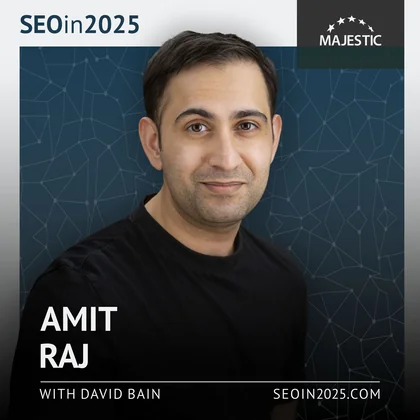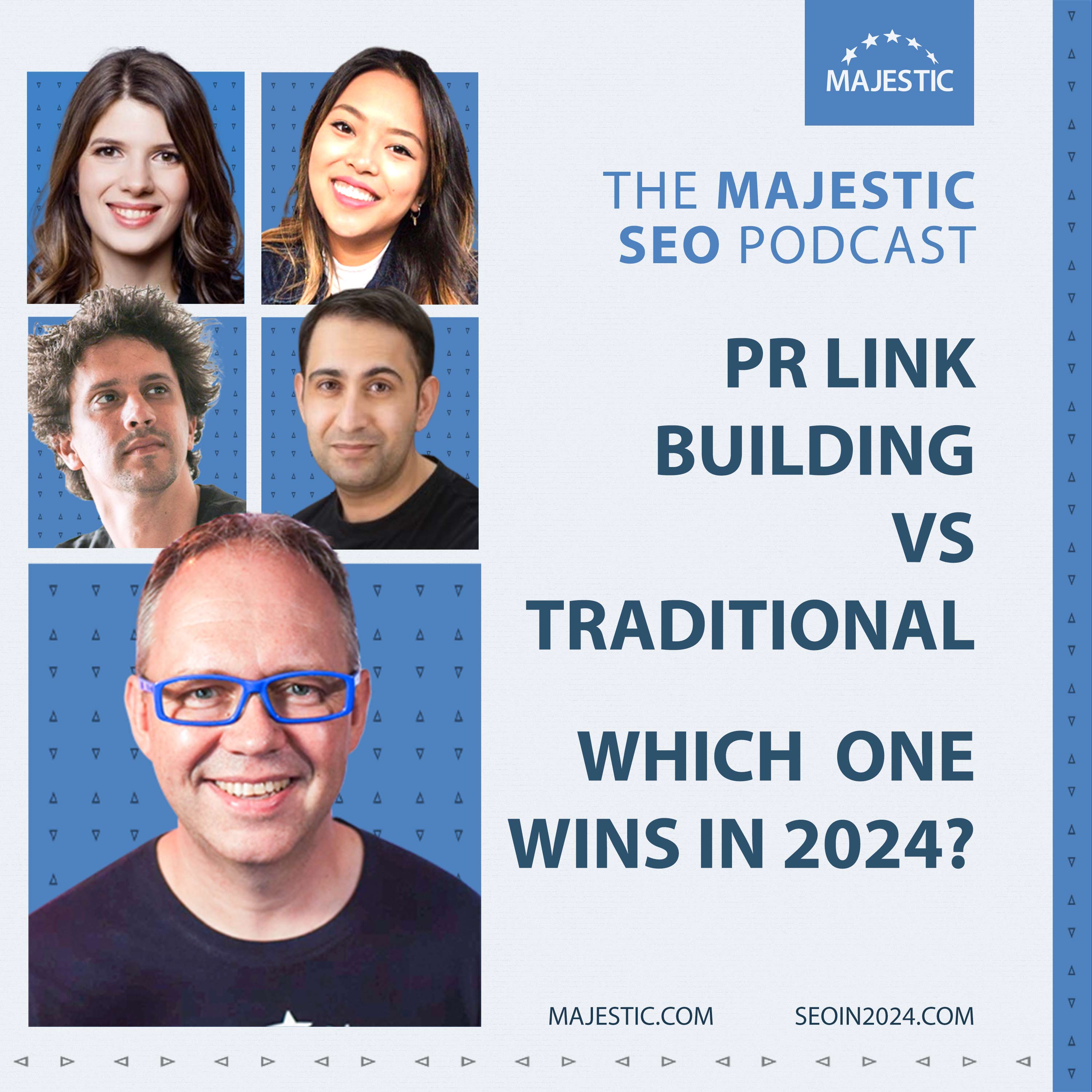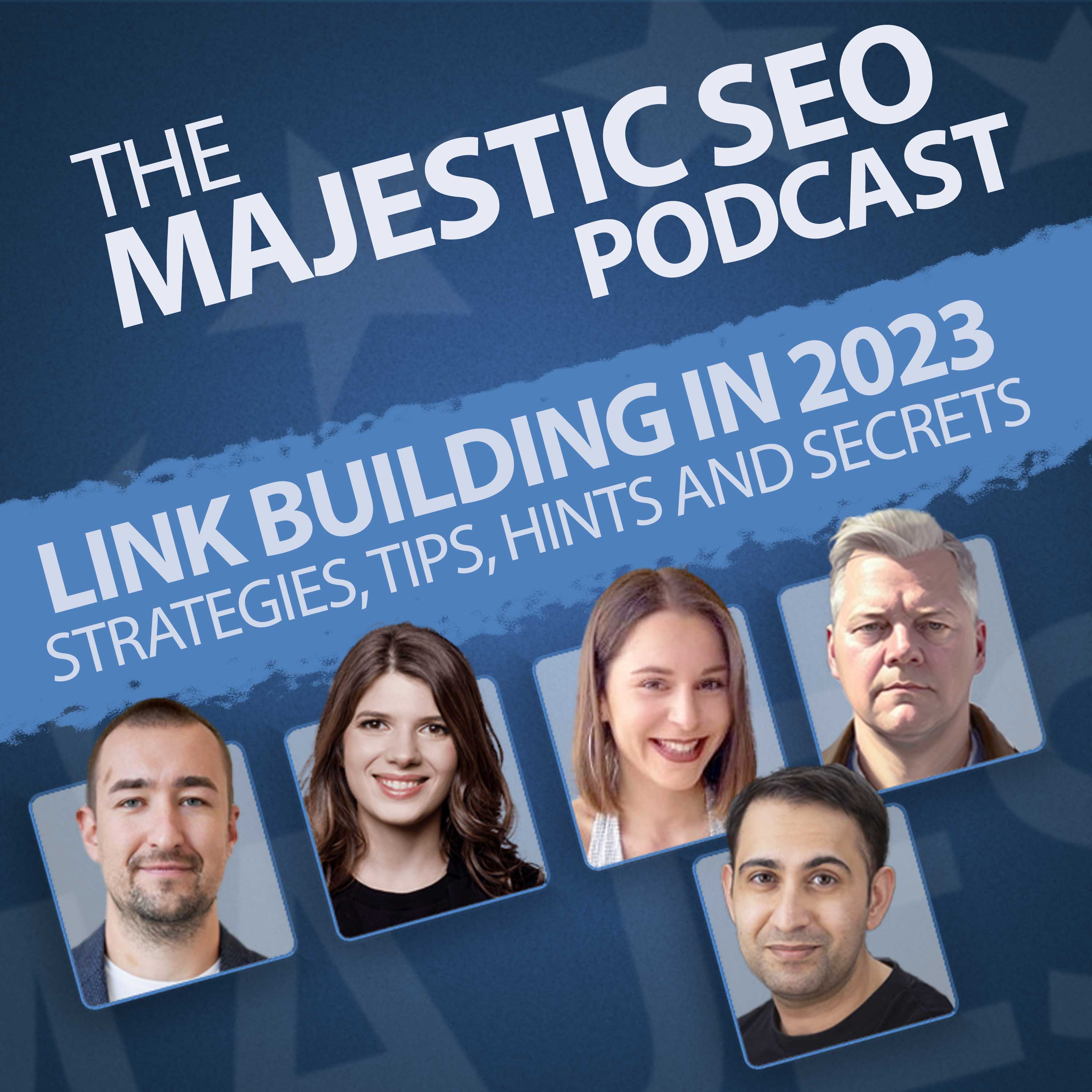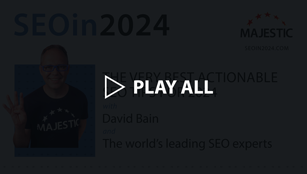-
Site Explorer
- Majestic
- Summary
- Ref Domains
- Backlinks
 New
New Lost
Lost- Context
- Anchor Text
- Pages
- Topics
- Link Graph
- Related Sites
- Advanced Tools
- Author ExplorerBeta
- Summary
- Similar Profiles
- Profile Backlinks
- Attributions
- Compare
-
Link Tools
- My Majestic
- Recent Activity
- Reports
- Campaigns
- Verified Domains
- OpenApps
- API Keys
- Keywords
- Keyword Generator
- Keyword Checker
- Search Explorer
- Link Tools
- Bulk Backlinks
- Neighbourhood Checker
- Submit URLs
- Experimental
- Index Merger
- Link Profile Fight
- Mutual Links
- Solo Links
- PDF Report
- Typo Domain
- Free SEO Tools
- Support
Focus on relevance and depth, for both your content and your links
Amit Raj
Amit Raj from The Links Guy says that you need to go deeper and be more relevant, and he’s looking at links as well as the content you produce.

Focus on relevance and depth, for both your content and your links
Amit says: “Recognise the importance of relevance and depth when it comes to content and link building.
What is relevance?
“There are two things to consider here: content and link building. One of the concepts that I’ve been looking at recently is your serviceable available market vs your serviceable obtainable market, but in relation to your keywords and content. People have been touching on that more and more.
Rather than only focusing on what keywords or content your competitors are targeting, or going off vanity metrics like search volume or KD score (keyword difficulty), think about what content aligns with your audience. Your competitors might not be targeting those keywords.
For me, that’s the relevance but, at the same time, that’s depth because you’re really having to think in terms of what you should be targeting and what aligns with the audience you’re trying to attract.
Then for link building, it’s the same kind of thing. It’s going for relevant links and thinking about the context of those links and what content is going to attract those kinds of links. If you reach out to people, what’s going to get you the most relevant links?
That will dictate who you should be reaching out to and what content you should be pitching to those publications. By extension, you’ll naturally raise the bar on the quality of your link building efforts as well.”
Is keyword difficulty not as relevant as people think?
“I see a lot of people who will analyse their competitors and cut out keywords based on something like a keyword difficulty score.
I saw a video recently about the way that content is being targeted and the way that people produce content as part of their SEO strategy. Somebody took on a client and found that they were targeting a keyword like ‘What is a KPI?’ It seemed like a good keyword to go for at the time, by whoever suggested it. It had big volume, and a competitor was probably targeting it.
What he was trying to say was, is that actually your audience? Is there any value in targeting that, sinking all this effort into this huge piece about KPI, and regurgitating the same info as everybody else? Is that traffic going to turn into business? That’s the end goal.
It might be a broad term, but is it going to turn into relevant traffic? Is it going to turn into business and inquiries? Otherwise, you’d be better off focusing on something else.”
Could you maybe go into a bit more depth about ‘addressable’ and ‘attainable’ markets?
“Anyone who’s studied marketing will know more about this than me, but you have your TAM (Total Addressable Market), SAM (Serviceable Addressable Market), and SOM (Serviceable Obtainable Market).
You can apply that to your keyword targeting. For instance, your SAM will be the segment of your TAM that is your market, with your current business model.
You can determine that, and you can analyse your competitors. You can use certain tools to extract potential keywords you should be targeting. However, this is going to take some manual work. That’s the unfortunate thing, in terms of determining which of those keywords you should be targeting.
You can use a keyword clustering tool, and there are a few out there that people might know of. You can input your keywords, and it will cluster them, because some of those keywords could be targeted with the same piece of content.
At the same time, you need to cut out the stuff that isn’t really your market. Whenever you use an SEO tool to analyse your competitors, it is going to give you a lot of junk. Then, it’s about categorising that into your SAM and your SOM. I would define your SOM as something that you can realistically get within the next 1-1.5 years.”
How do you know whether you can realistically get something?
“This is where metrics like keyword difficulty do come into it. That can be an indicator. Also, things like the link gap in comparison to the competitors that are competing for that keyword. That is tied in with keyword difficulty scores anyway, because they factor that in. That can give you an indication.
You also tend to find that the extremely broad terms are, generally speaking, going to be some of the hardest terms to obtain. Through that, you would determine what you can realistically capture. Again, you can only go off estimations, things like keyword difficulty score, and what aligns with your topical authority. That will also help determine what you think you can actually capture and what is too broad.
If you’re comparing just the number or quality of links between you and competitors, your site is going to have a different level of expertise in your subject. If Google perceives you as being more of an expert, then the fact that you’ve got fewer links may not matter. You might find that, by taking this approach, you can rank for certain content without having to sink a lot of money into proactively acquiring links.
If you can get the content right – which comes down to the depth of the content, how you’ve researched it, and whether you’ve added your own unique insights – you might rank that piece of content quicker than you’d expect.
You just want to align your keyword and your content targeting with what’s going to lead to business. Everyone is looking at their marketing budgets, especially now. People are tightening up marketing budgets and trying to see what they can do with what they have. You end up focusing on what matters, or what you could realistically capture.
Sometimes you could go for a hard keyword, and you might rank it quicker than you’d expect. However, for a topic like ‘What is a KPI?’, you need to sit back and say, is this a good idea? Should you be putting effort into these kinds of keywords?”
What type of content is most likely to be appreciated by Google and users?
“I saw a couple of studies about this recently, and we all know about how AI is coming into the content game and the impact that’s having. It’s not to say you can’t use AI (obviously it does have its uses), but it’s ultimately going to have to come down to the depth of the content.
What is unique about it? What new info are you injecting into it? Even things like trying to align it with your social strategy. Can you include video content? Can you visualise certain things? Do you have unique data or a study that nobody else has? This is something we should be doing anyway because it’s part of why we’re creating content for the users.
You want people to engage with the content and spend time on it. As we know from the algorithm leak that happened not long ago, Chrome user data is being used in some way. I don’t know if everyone’s really thought about that, but it’s not just SEO traffic. In theory, if you were attracting traffic – whether direct traffic, referral traffic, or from socials – that’s Chrome user data that would be engaging with that content. It’s part of the bigger picture.
You need to consider what you can bring into your content, even from different channels, so you don’t just regurgitate everything that’s out there. You need something unique, something that’s going to get people reading and engaging with it, linking to it, or sharing it with other people on socials.”
By depth, do you mean adding different elements within that piece of content, be it quotes, tables, or unique information, more than just word count?
“Yeah, I would agree with that. It’s also having depth when you’re planning your content. It’s not as simple as extracting a report from an SEO tool and dumping it in the writer’s lap. Unfortunately, it’s not going to be as easy as that.
When it comes to the research and what information or other elements you can add in, maybe you can’t produce content as fast as you might have otherwise, but you might not need to produce as much volume.
The ultimate goal is aligning it with whether it is going to lead to inquiries or revenue, and thinking about those things.”
How often do you have to consider relevance and depth as part of an SEO strategy?
“It’s an ongoing thing. You want to look at every element of your SEO strategy where you can add more depth to the process, whether it’s at the planning stage or elsewhere. The good thing is, this is what a lot of writers are looking for.
We don’t really want to be regurgitating info that’s already out there and taking stuff from ChatGPT. Ultimately, that’s exactly how Google is viewing it. They are looking for fresh info and something different about the site. These things that we saw in the algorithm leak are a bit of a clue as to what we should be doing, in terms of how they use Chrome user data and how other channels fit in.
Everyone’s talking about omnichannel. You shouldn’t just rely on traffic from Google, and that’s a good thing. There is synergy there. It’s all part of a bigger picture that we need to be thinking about.”
How do you decide which additional elements to incorporate in a piece of content?
“It’s about knowing what you’re good at and what aligns with your brand. There are different ways of going about it.
You can get inspiration from what’s in the SERPs by looking at what’s in the top-ranking results, but just because somebody is quoting some expert, for example, that doesn’t necessarily mean you have to do it. Maybe you can run a study, maybe you have information or tips that nobody else has, or maybe you have a different viewpoint.
There isn’t any one way of doing it. You can take some inspiration from what’s in the SERPs or even look at a different industry and a brand that’s doing really well in their SERPs. Does that align? Is that something you can be doing, and you can bring in, that others aren’t doing?”
If an SEO is struggling for time, what should they stop doing right now so they can spend more time doing what you suggest in 2025?
“When it comes to content, focus on the keywords that align with your audience. Audience and channel alignment are very important.
With link building, we know it’s not a volume game anymore. It’s a relevance game, to some extent. Also, don’t focus on arbitrary metrics like DA, and it might save you budget in the long term.
Stop publishing content that doesn’t actively align with your established audience. The same thing is true with links.
Everyone agrees that you don’t need as many links as you thought you did. At the same time, this is a good time to start thinking about how you’re building links and how you’re going to attract links. If you’re proactively building them, where are you getting them from? What’s the context of it? Does that align with your audience? Those are definitely things to think about.”
Amit Raj is Founder at The Links Guy, and you can find him over at TheLinksGuy.com.
Also with Amit Raj

Majestic SEO Podcast
|
Joining David Bain to discuss the merits of PR link building vs ‘conventional’ link building are Alexandra Tachalova from Digital Olympus, Amit Raj from The Links Guy, Eva Cheng from Evolved Search and Nick Rubright from Ranko Media.
|

SEO in 2024
|
Debbie spoke about going back to basics, and Amit Raj from The Links Guy believes that developing a relationship with people is what link building has always been about. |

Majestic SEO Podcast
|
In this episode of The Majestic SEO Podcast bought together Alexandra Tachalova, Jason Morris, Victor Karpenko, Amit Raj, and Tamara Dzajkovska to share their insights and predictions for the future of link building, and what you can expect in 2023.
|
Choose Your Own Learning Style
 Video
Video
If you like to get up-close with your favourite SEO experts, these one-to-one interviews might just be for you.
Watch all of our episodes, FREE, on our dedicated SEO in 2025 playlist.
 Podcast
Podcast
Maybe you are more of a listener than a watcher, or prefer to learn while you commute.
SEO in 2025 is available now via all the usual podcast platforms
Don't miss out
Opt-in to receive email updates.
It's the fastest way to find out more about SEO in 2025.
Could we improve this page for you? Please tell us




